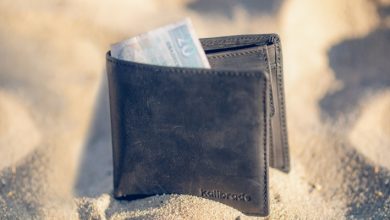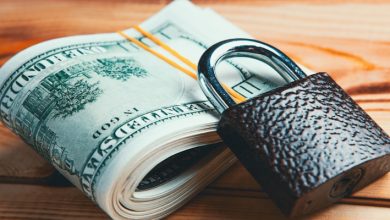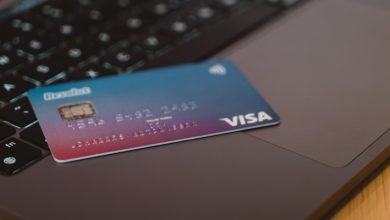A Beginner’s Guide to Setting Up a Hardware Wallet

- A brief introduction to hardware wallets
- Understanding the importance of securing your cryptocurrency
- Step-by-step guide to setting up your hardware wallet
- Choosing the right hardware wallet for your needs
- Tips for keeping your hardware wallet safe and secure
- Exploring additional features and functionalities of hardware wallets
A brief introduction to hardware wallets
Hardware wallets are physical devices that securely store the private keys necessary to access your cryptocurrency holdings. They offer an extra layer of security compared to software wallets, as they are not connected to the internet and therefore not susceptible to online hacking attempts.
When setting up a hardware wallet, you will typically be required to create a PIN code and a recovery seed phrase. The PIN code acts as a first line of defense against unauthorized access, while the recovery seed phrase can be used to restore your wallet in case the device is lost or damaged.
It is important to purchase a hardware wallet from a reputable manufacturer to ensure its security and reliability. Popular options include Ledger, Trezor, and KeepKey. Once you have acquired your hardware wallet, you can begin the setup process by following the instructions provided by the manufacturer.
Understanding the importance of securing your cryptocurrency
Securing your cryptocurrency is crucial in order to protect your investment from potential threats such as hacking and theft. By utilizing a hardware wallet, you can significantly enhance the security of your digital assets. This type of wallet stores your private keys offline, making it much more difficult for hackers to gain access to your funds. It provides an added layer of protection that is essential in the world of cryptocurrency where cyber attacks are becoming increasingly common.
Step-by-step guide to setting up your hardware wallet
To set up your hardware wallet, follow these step-by-step instructions. Firstly, ensure that you have the wallet, a USB cable, and a computer with internet access.
Next, connect the hardware wallet to your computer using the USB cable. Make sure the connection is secure before proceeding.
Once connected, navigate to the official website of the hardware wallet manufacturer. Look for the setup or installation section on the website.
Follow the on-screen instructions to download and install the necessary software for your hardware wallet. Open the software after installation is complete.
Create a new wallet by following the prompts on the software. Make sure to set a strong password and write down your recovery phrase.
Once your wallet is set up, you can start transferring your cryptocurrency assets to the hardware wallet for safe storage.
Remember to keep your recovery phrase in a safe and secure place, as it is essential for recovering your funds in case your hardware wallet is lost or damaged.
By following these steps, you can set up your hardware wallet and secure your cryptocurrency assets with peace of mind.
Choosing the right hardware wallet for your needs
When it comes to choosing the right hardware wallet for your needs, there are several factors to consider. One of the most important things to look at is the security features of the wallet. You want to make sure that your cryptocurrency is safe and protected from any potential threats. Some popular options include wallets that offer secure element chips or passphrase protection.
Another important consideration is the compatibility of the wallet with the cryptocurrencies you plan to store. Not all hardware wallets support every type of cryptocurrency, so it’s essential to check if the wallet you’re interested in works with the coins you have. Additionally, you may want to consider the user interface and ease of use of the wallet. Look for a device that is intuitive and straightforward to navigate.
One factor that is often overlooked is the reputation of the company behind the hardware wallet. You want to choose a wallet from a reputable manufacturer with a track record of security and reliability. Research the company’s history and read reviews from other users to get a sense of their reputation in the cryptocurrency community.
Lastly, consider the price of the hardware wallet. While you don’t want to skimp on security, you also don’t want to overpay for features you don’t need. Compare prices across different wallets and consider what features are essential for your needs. Remember, investing in a hardware wallet is an investment in the security of your cryptocurrency holdings, so choose wisely.
Tips for keeping your hardware wallet safe and secure
When it comes to ensuring the safety and security of your hardware wallet, there are several key tips to keep in mind:
- Always set up a strong and unique PIN code for your hardware wallet. Avoid using easily guessable combinations such as “1234” or “0000”.
- Make sure to keep your recovery seed phrase in a safe and secure location. Consider using a fireproof and waterproof safe or a safety deposit box.
- Avoid sharing your recovery seed phrase with anyone else, as this information can be used to access your funds in case of theft or loss of your hardware wallet.
- Regularly update the firmware and software of your hardware wallet to ensure that you have the latest security features and bug fixes.
- Be cautious of phishing attempts and only enter sensitive information on your hardware wallet when you initiate a transaction.
By following these tips, you can help protect your cryptocurrency holdings and have peace of mind knowing that your hardware wallet is safe and secure.
Exploring additional features and functionalities of hardware wallets
Once you have set up your hardware wallet and transferred your cryptocurrencies, you may want to explore additional features and functionalities that can enhance the security and usability of your device. Here are some key aspects to consider:
- Multi-signature support: Some hardware wallets offer the ability to set up multi-signature wallets, which require multiple private keys to authorize a transaction. This can add an extra layer of security by requiring the approval of multiple parties.
- Integration with third-party services: Many hardware wallets can be integrated with third-party services such as cryptocurrency exchanges or portfolio trackers. This can streamline your experience and make it easier to manage your assets.
- Secure storage of non-cryptocurrency data: Some hardware wallets allow you to store non-cryptocurrency data securely, such as passwords or digital certificates. This can help you keep all your sensitive information in one secure location.
- Advanced security features: Explore the advanced security features of your hardware wallet, such as passphrase protection, PIN protection, or the ability to set up hidden wallets. These features can further protect your funds from unauthorized access.
- Firmware updates: Regularly check for firmware updates for your hardware wallet to ensure that you have the latest security patches and improvements. Keeping your device up to date is essential for maintaining the security of your funds.
By exploring these additional features and functionalities of your hardware wallet, you can make the most of your device and ensure that your cryptocurrencies are secure and easily accessible whenever you need them.



